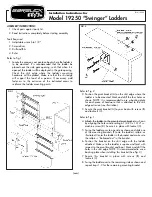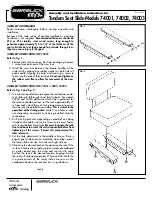
COMBI
1.1
2.1
2.2
2.3
3.1
3.2
3.3
3.4
4.1
4.2
4.3
4.4
6.1
7.1
7.2
7.3
45
6.1–4: Zone
(Scan Zone)
These settings specify the note and velocity ranges that will
operate arpeggiators A and B.
6.1–4a: Scan Zone A/B
Zone Map
This shows the “Scan Zone” for each arpeggiator, A and B.
A: Key
Btm (A-Bottom Key)
[C–1...G9]
Top (A-Top Key)
[C–1...G9]
Specifies the range of notes (keys) that will operate arpeg-
giator A. “Top” specifies the upper limit, and “Btm” speci-
fies the lower limit.
A: Vel (Velocity)
Btm (A-Bottom Velocity)
[001...127]
Top (A-Top Velocity)
[001...127]
Specifies the range of velocities that will operate arpeggiator
A. “Top” specifies the upper limit, and “Btm” specifies the
lower limit.
B: Key
Btm (B-Bottom Key)
[C–1...G9]
Top (B-Top Key)
[C–1...G9]
B: Vel (Velocity)
Btm (B-Bottom Velocity)
[001...127]
Top (B-Top Velocity)
[001...127]
Specify the range of notes (keys) and velocities that will
operate arpeggiator B (
☞
“A: Key,” “A: Vel”).
You can also set this parameter by holding down the
[ENTER] key and playing a note on a connected MIDI
instrument.
■
6.1–4b: UTILITY
☞
“Write Combination,” “Solo Selected Timbre” (1.1–1d),
“Copy Arpeggiator” (6.1–1c)
Here you can specify the output bus for the program oscilla-
tor of each timbre 1–8. You can also specify the send level to
the master effects.
☞
For details on insertion effects, refer to p.141 “8. Effect
Guide.”
7.1–1: BUS
7.1–1a: BUS Select, Send1(MFX1), Send2(MFX2)
BUS Select
[DKit, L/R, IFX1...5, 1...4, 1/2, 3/4, Off]
Specifies the output bus for the program oscillator of each
timbre 1–8. The current setting status can be viewed in the
Route page.
DKit:
This can be selected only if the program for which set-
tings are being made is a drum program “Mode (Oscillator
Mode) Drums” (PROG 2.1–1a). With a setting of DKit, the
“BUS Select” (GLOBAL 5.1–3a) setting made for each key of
the drum kit will be used.
For example, if the “BUS Select” settings of the drum kit
have assigned Snare sounds to IFX1 and Kick sounds to
IFX2, setting this parameter to DKit will send the Snare
sounds to IFX1 and Kick sounds to IFX2. If you wish to
modify these routings, use Utility “DKit IFX Patch” (7.1–1b).
If this is set to 1/2 or 3/4, the programs of timbres 1–8
will be sent in stereo from AUDIO OUTPUT (INDIVID-
UAL) 1/2 or 3/4. If the pan of the program oscillator is
controlled by MIDI control change #10 (pan) or AMS
(Alternate Modulation Source), the sound will be out-
put with the pan setting that is in effect at the moment
of note-on. Unlike the case when this parameter is set to
L/R
to output the sound from (MAIN) L/MONO and
R, the pan of a sounding note will not change in real-
time.
If you wish to move the pan of a sounding note in real-
time and output it from AUDIO OUTPUT (INDIVID-
UAL) 1/2 or 3/4, you must set “BUS Select” to IFX1 (or
IFX2
–IFX5), select 000: No Effect for “IFX1” (or IFX2–
IFX5
) (7.2–1a), and for the sound that has passed
through the IFX, set “BUS Select” (7.2–1a) to either 1/2
or 3/4.
S1 (Send1(MFX1))
[000...127]
S2 (Send2(MFX2))
[000...127]
For each timbre 1–8, these parameters set the send level to
master effects 1 and 2. These settings are valid when “BUS
Select” is set to L/R or Off. When IFX 1, 2, 3, 4 or 5 are
selected, the send levels to master effects 1 and 2 are set by
the “S1 (Send1(MFX)), ” “S2 (Send2(MFX))” parameters of
the 7.2: Ed–InsertFX, Setup page, after the sound has passed
through IFX1–5.
If “BUS Select” is set to 1, 2, 3, 4, 1/2, or 3/4, these settings are
ignored.
6.1–4a
6.1–4b
Key zone of arpeggiator A
Velocity zone of
arpeggiator A
Velocity zone of
arpeggiator B
Key zone of arpeggiator B
C–1–G9
COMBI 7.1: Ed–BUS
7.1–1a
7.1–1b
















































